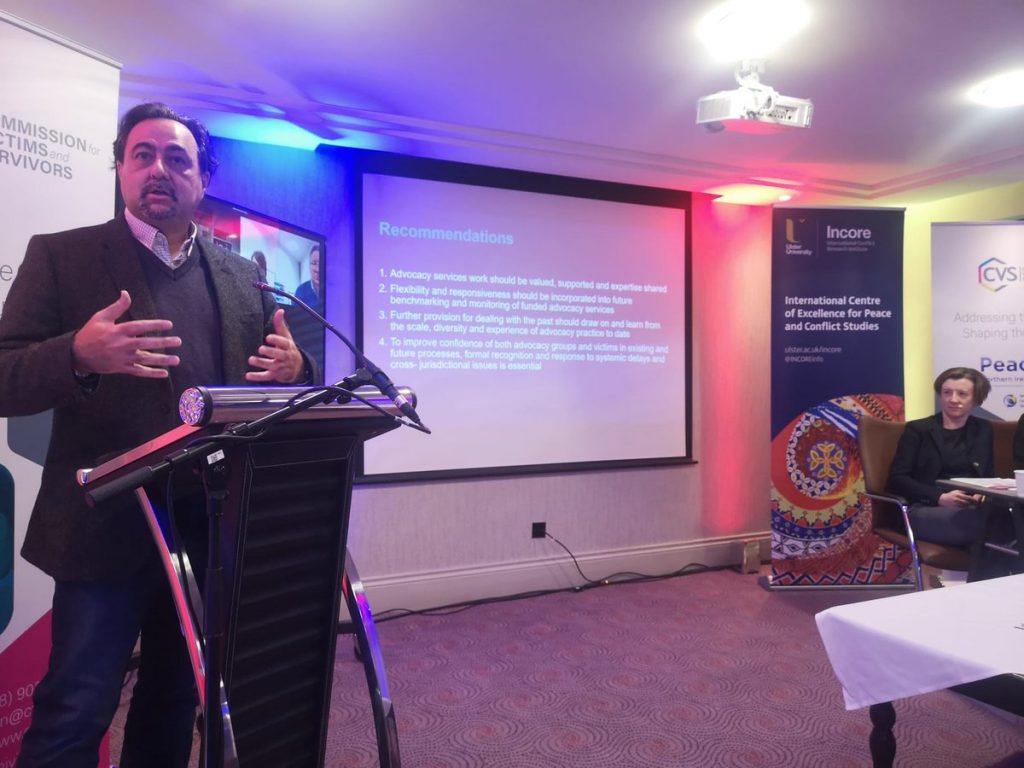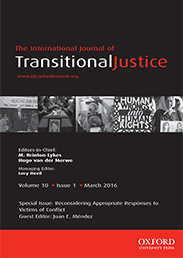Today the Commission for Victims and Survivors of Northern Ireland (CVSNI) and Ulster University (INCORE & TJI) launched the Advocacy Services Report focusing on advocacy and dealing with the past. The report was authored by Dr Maire Braniff, Professor Brandon Hamber, Dr Catherine O’Rourke, Dr Philip McCready and Dr John Bell.

The Report found that while the needs of victims and survivors are not homogenous there are core principles that underpin effective service provision. Essentially they should be victim-led, build trust, not create dependency, be compassionate and empathetic and value the lived experience and perspective of the individual. The groups offering advocacy were led by such principles. Further provision for dealing with the past should draw on and learn from the scale, diversity and experience of advocacy practice to date.
Equally, however, our research found that this was challenging work. There was unanimity amongst all service users and service providers that the biggest challenge was the systemic delay and the slow nature of legacy investigation and information recovery. The biggest scope for improvement in advocacy services was the accessibility of information and more streamlined and quicker responses from statutory agencies.








 Last week David Coyles, Dr Adrian Grant and Professor Brandon Hamber presented research findings to a Knowledge Exchange Seminar Series (KESS) at Stormont on “Hidden barriers and divisive architecture: the case of Belfast”. The research notes that “peace-walls” are particularly symbolic of the role that architecture plays in separating residential communities and a comprehensive scholarship continues to assess their effects, but the research focuses on other barriers in the city. The presentation outlines original findings from a three-year multi-disciplinary academic research project funded by the Arts and Humanities Research Council (AHRC), which extends this current understanding of physical and social division. It reveals new evidence of a distinct and important, yet largely unrecognised, body of divisive architecture; an extensive range of ‘hidden barriers’ embedded in various architectural forms across Belfast’s residential communities. You can download the Policy Brief,
Last week David Coyles, Dr Adrian Grant and Professor Brandon Hamber presented research findings to a Knowledge Exchange Seminar Series (KESS) at Stormont on “Hidden barriers and divisive architecture: the case of Belfast”. The research notes that “peace-walls” are particularly symbolic of the role that architecture plays in separating residential communities and a comprehensive scholarship continues to assess their effects, but the research focuses on other barriers in the city. The presentation outlines original findings from a three-year multi-disciplinary academic research project funded by the Arts and Humanities Research Council (AHRC), which extends this current understanding of physical and social division. It reveals new evidence of a distinct and important, yet largely unrecognised, body of divisive architecture; an extensive range of ‘hidden barriers’ embedded in various architectural forms across Belfast’s residential communities. You can download the Policy Brief,